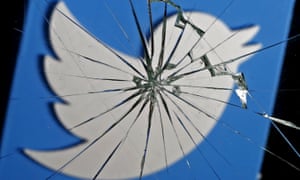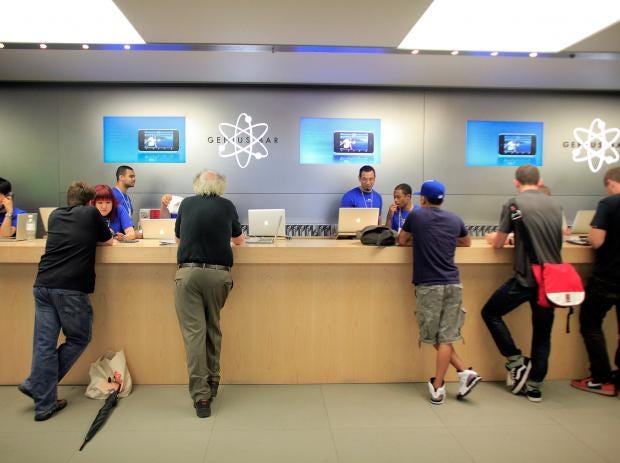The Music
Industry (24) –
The music industry is a global
business that generates profit by selling musical recordings in both physical
and digital formats to media audiences. The music industry is a complex and
competitive business and record companies and labels are continually devising
new ways of attracting audiences to consume their products. Most refer and define the
music industry as the ‘organisation of the various activities associated with
the performing and recording of music and distributing access to those
performances to audiences around the world’. The term music industry refers to
all the businesses that are responsible for the creation and the marketing of music.
The music industry is an umbrella term used to explain all aspects of music
production. The diagram below highlights the various roles undertaken by record
labels in the marketing and production of music.
Distribution
and Marketing
Once an artist has created their
recording, it is then distributed and marketed in order to attempt to make a
profit and cover the cost of its production. It is the record label’s
responsibility to promote and distribute the product.
Record companies must market the music
correctly in order to attract the intended target audience. The mass media,
specifically the Internet, radio, television and the music press play an
important role in the distribution and marketing of music to the intended
target audience.
• Radio:
plays an important role in promoting the artist via frequent
airplay on popular channels. In 2004
the official downloads chart
was launched and runs alongside the
conventional music chart.
This has provided artists with more
opportunity for radio
exposure.
•
Television: the popularity of music channels such as MTV helps
promote a recording artist’s image and
sound to a global
audience.
•
The Music Press: have close relationship to the music industry
and are very influential in the
marketing and promotion of new
recording artists.
• The
Internet: official websites help reinforce the image and
sound of the recording artist.
Websites offer the opportunity
for continual and up-to-date promotion
and the popularity of
chat rooms, message forums and blogs
also enable fans to
communicate with other fans.
Now with the emerging use of
technology people can stream music
straight from their devices with apps such as Tidal, Apple Music and Spotify. A
monthly fee of £4.99 - £19.99 a month is charged depending on the quality of
the service. For instance, for high-definition streaming it’s £19.99 on TIDAL,
but for standard quality streaming it’s £9.99 on Spotify and £12.99 on TIDAL.
Adorno and
the Culture Industries
Adorno built his theory of the culture
industries on Marxist principles. He was a critic of the capitalist system and
argued that popular culture or the culture industries maintained capitalism.
They achieve this by offering audiences generic products and consumer goods
that act as diversions, making them disinterested in politics and change.
Adorno argued that the products produced by them culture industries are:
• Formulaic
• Simplistic
• Emotive
Adorno believed the culture industries
were responsible generating false needs. The culture industries’ main role is
to persuade consumers to put money they have earned back into the capitalist
system. Adorno saw the culture industries’ use of technological reproduction as
a way of controlling audience spending.
Peterson
and Berger
Peterson and Berger examine the
concept of authenticity and ideology within popular music. They identify that
historically popular music had come from a place of resistance to dominant
ideologies and values and provided a creative outlet for people that allowed
expression of counter-cultural positions.
However, they argue that:
• Once music is commercialised it loses
its authenticity
• Commercialised music is
non-resistant to dominant ideologies,
even when its origins are (e.g. Rap
and Hip Hop, Blues, Jazz,
Punk etc.)
Peterson and Berger believe that
because the music industries are primarily concerned with generating a profit,
they choose to invest in musical forms that offer the least resistance to the
culture and they take resistant musical forms (e.g. Soul) and sanitize them
(removing ideological challenges) to make them attractive to a mainstream
audience (e.g. Mariah Carey). Once a successful format is identified it will be
replicated and re-sold to audiences. This on-going production of similar
musical forms reduces the possibility of musical development and removes all
resistant qualities.
This, Peterson argues is problematic
for audiences as:
• The audience relies on the media for
information and this removes audiences from creative ‘street level’ or original
music
• Audiences can only access what the
media offers them and they do not have access to all musical choices that are
available
• The industry only invests in the
types of music that audiences are familiar with and, therefore, only offer what
has been proven to be successful in the past
• This reduces music into formulaic
and predictable formats means past successes are replicated often
o For audiences this means they can
only access more of the same
o For the record companies there is
less financial risk and more potential profit
o Ultimately, this means less choice
for consumers
The
changing face of the music industry (122):
The music industry is a complex
industry which is made up of conglomerates such as those identified above as
well as record labels, some of which are owned by the big 4, others which are
considered to be ‘indie’ (independent) labels such as Rounder Records and
Concord Records who make music for niche audiences. Most ‘indie’ labels have
had to develop affiliations with major companies so that they can effectively
distribute their music. Examples include Def Jam (Universal), Aftermath
(Interscope/Universal), Maverick (Warner Bros. Music), and LaFace and Zomba
(Sony BMG).
The music industry wants to protect
their position of dominance. The five major record labels; Sony, Universal,
BMG, EMI and Time Warner monopolize the market when it comes to sales of music leaving less than 20% for the hundreds of
independent record labels or indie labels. Furthermore when the independents
get too big or an artist or group starts to garner more of a fan following
these major companies usually pick up the artist or group or buy the record
label, this is called Horizontal Integration. Music companies like to ensure
that when they invest into a music artist or group that they have the potential
to be commercially successful and take a large share of the profits made from
the sale of the music. According to www.songrights.com music companies give
between 9% and 12% to the artist and the rest is profit for their company. So,
for many decades the music industry had a relatively uncomplicated business
model: band or artist records song, record label sells song and then artist and
record label make money
Music companies like to ensure that
when they invest into a music artist or group that they have the potential to
be commercially successful and take a large share of the profits made from the
sale of the music. According to www.songrights.com music companies give between
9% and 12% to the artist and the rest is profit for their company. So, for many
decades the music industry had a relatively uncomplicated business model: band
or artist records song, record label sells song and then artist and record
label make money.
However, this traditional model is
changing. Developments in technology and the emergence of the Internet mean
that artists have the potential to reach audiences without the need for a major
company and where once recording equipment was expensive it was out of reach
for the average person; it is now widely available at a low cost. You can
purchase sophisticated music production software for a few pounds on your
mobile device or tablet.
In many cases artists are able to
promote and distribute their music digitally without the assistance of a record
label. Unsigned artists can sell their music on iTunes, have it streamed on
Spotify, TIDAL or Soundcloud and produce their own videos for YouTube. In an
era of fragmented platforms, file sharing, and non-traditional routes to
market, the music industry is facing various challenges. It has had to react to
change: new formats, new technology and new business models mean an industry in
a constant state of transformation. This has been particularly obvious in the
way that audiences are dictating how they want to consume their music, but
having more ways you can listen to music is not necessarily the same thing as
having more choice.
Dramatically with the emergence of
digital technology and the music industry has struggled to keep up at times and
this is especially true when it comes to changing audience behaviours. One of
the most problematic issues that the industry is facing is the ‘culture of
free’. In recent years consumers are less willing to pay for their music and as
a consequence piracy and file-sharing have seen the industry lose billions over
the last decade. According to the Institute for Policy Innovation global music piracy
causes $12.5 billion of economic losses every year. In order to combat this
music streaming services such as Spotify and TIDAL have worked in conjunction
with the industry to try offer audiences the opportunity to listen to music but
not actually download it, which means it is not being shared YouTube has also
placed ID content censorship on videos to stop music being downloaded. However,
these are only temporary measures and the industry has had to find more ways to
prevent this.
One way it is doing this is through
saturating the market with what Mulligan calls ‘The Superstar Economy.’ The
Internet was meant to weaken the dominance of superstar artists in the music
industry and enrich the smaller, niche music creators. But new research
suggests that this “long tail” theory is wrong: superstars are capturing the
vast majority of music revenues and their share is increasing – not decreasing
– because of the rise of digital services like iTunes and Spotify. The top 1
per cent of artists the likes of Rihanna and Adele accounted for 77 per cent of
recorded music income in 2013. Most digital music services have catalogues of
more than 20m tracks are not listened to. In this illusion of choice consumers
are overwhelmingly listening to the ‘hits’.
Para-social
relationships – Psychologists use the term “parasocial relationship” to describe
the connection people get from celebrities and other famous people but which an
illusion is. This can be seen through the functions the streaming apps have,
especially TIDAL which allows artists to update fans and stay connected by
providing them with exclusive news and playlists.




